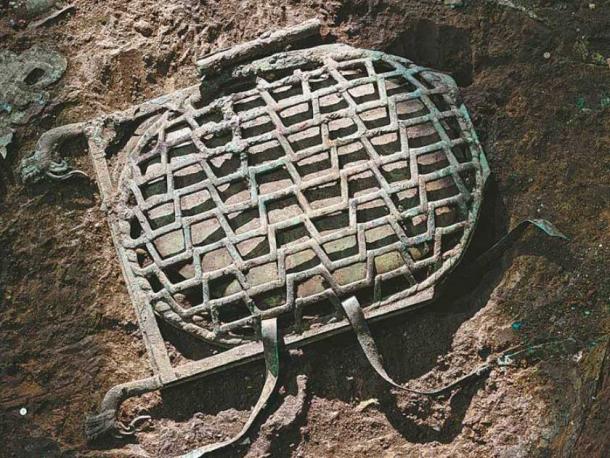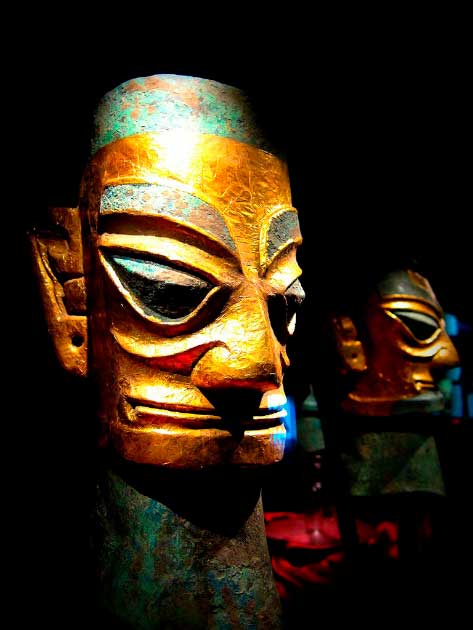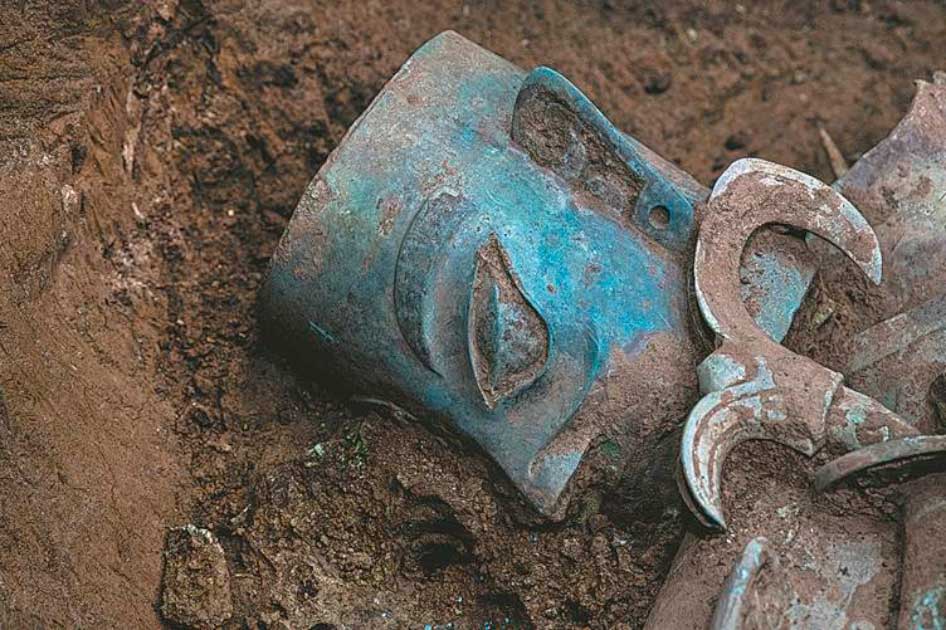Sanxingdui Excavation Pits Reveal Sophisticated Ancient Civilization
An advanced 3,000-year-old Chinese culture, whose existence was not known about until the 1980s, has been further revealed by recent excavations. Apparently, the existence of the highly developed southwest Chinese Sanxingdui civilization, in Sichuan province, was omitted from official records, despite hundreds of years of flourishing development! On Monday last, at the Sanxingdui ruins, Chinese archaeologists reported that they have unearthed a treasure trove of artifacts across six sacrificial pits, as reported by the Chinese state news agency Xinhua.
Unprecedented Finds from the Sanxingdui Civilization Site
Since October 2020, the number of artifacts and relics recovered from the Sanxingdui site have reached an astounding total of 13,000.
In the latest Sanxingdui excavations, an area of 1,834 square meters (19,741 square feet) was explored in the sacrificial pit area. The entire sacrificial pit area covers an area of almost 13,000 square meters (139,931 square feet)!
The latest major find was a bronze box decorated with jade. The box had a turtle-back shaped top made of bronze and jade, with turquoise jade embellishments. It also had four dragon-head handles and a few streamers and was likely wrapped in silk and offered as burial sacrifice.
- A Tale of Taming Dragons, Chinese Symbol of Divine Power and Defeater of Evil
- 2,300 Years and Still Shining: Archaeologists Unearth Brilliantly Preserved Chinese Sword
The Sanxingdui bronze chest was described as an “unprecedented discovery” by Li Haichao, a professor at Sichuan University, who is in charge of one of the excavation teams. He added that while the functionality of the vessel remains in doubt “we can assume that ancient people treasured it.”

The latest major find at the Sanxingdui site was a bronze box decorated with jade. The box had a turtle-back shaped top made of bronze and jade, with turquoise jade embellishments. It was likely wrapped in silk and offered as burial sacrifice. (Xinhua / China Daily Post)
All in all, archaeologists have found 3,155 relatively intact relics at the sacrificial pit site, including 1,238 pieces of bronzeware, 543 gold, and 565 jade artifacts.
A stunning crowned, bronze statue with a snake’s body was also found. According to Ran Honglin, director of the Sanxingdui cultural relics and archaeology research institute, the snake body statue was the most important recent find of all, writes the Global Times.
The bronze statue consists of three distinct sections, with the snake’s body occupying the middle. The figure’s hands are propped up on a bronze drinking vessel called a lei, sitting on a square pedestal. Overall, it is an image of a man with characteristics specific to the Shu kingdom, particularly the protruding eyes. On his head, a vermilion painted zun can be seen, which is the name of another kind of Chinese bronze drinking vessel. Strangely enough, the man’s nose is a pig’s nose.
Such a complex and well-imagined artifact can only point to a vivid imagination and visions of a mystical world by the Sanxingdui people, according to associate professor Zhao Hao from Peking University. He was in charge of the excavations at pit #8, where the pig-nosed bronze statue was found, according to the South China Morning Post.
Among the other recent significant finds, a bronze altar depicting a sacrificial scene that is nearly a meter (3.3 feet) tall was also found in one of the pits. This altar also provides new evidence of the immortal world perspective of the Sanxingdui Shu people. The altar was divided into three sections: the bottom part is a platform featuring beautiful hollow patterns. A muscular person is sitting in the center of each of the three sections from top to bottom.

These nearly 3,000-year-old Sanxingdui bronze heads with gold foil masks look like modern art and say a lot about the advanced metallurgy skills of the Shu people of Sanxingdui. (momo / CC BY 2.0)
The Astounding Craftsmanship of Almost-forgotten Sanxingdui
The quality and craftsmanship of the finds at the Sanxingdui ruins indicate a high degree of cultural advancement and sophistication, adding to the mystery and intrigue of this virtually “unknown” civilization.
Sanxingdui, literally meaning Three Star Mound, was accidentally discovered in 1986. And multiple artifact dating has revealed that this civilization existed nearly 3,300 years ago!
The Sanxingdui civilization is viewed to be the same as the ancient kingdom of Shu. In the last two years, Ancient Origins has reported more than once on the finds emerging from this almost-lost Chinese civilization. To date, researchers have remarked on incredible metallurgy skills of the Shu people.
- The Jade Emperor: Taoist Ruler of Heaven - and Celestial Bureaucrat
- Fit for a King: Royals of Ancient China Buried in Jade Ceremonial Suits
In a recent round of carbon dating on 200 relics, most of the pits were found to be from 1131 to 1012 BC, probably from the late Shang dynasty which lasted from the 16th to the 11th century BC. However, pit number 5 and 6 at the Sanxingdui site were dated to after the Shang dynasty period.
"We had never seen something like these, and we even don't know how to describe their patterns or shapes in short words," Honglin said. "It's also confusing for us to speculate how they were used before further studies. But these artifacts feature a mixture of typical local styles of cultural relics as well as those from the Central China Plains at that time. It demonstrates through close communications, the ancient Shu culture became a key part in early Chinese civilization."
Honglin has also pointed out that these relics are significant for comprehending the diverse nature of Chinese culture and unity in its early days. Full Chinese unification only happened in the Han dynasty (from 202 BC onwards).
The latest round of discoveries at Sanxingdui proves that China was a melting pot of civilizations. For example, the zun drinking vessel motif found on one of the recently unearthed artifacts at Sanxingdui was virtually unknown in the Shu kingdom but dominant in China’s Zhongyuan Central Plains region. Clearly, the zun was a motif borrowed from another civilization as is common in melting pot periods.
Sanxingdui field excavation work is slated for completion in October 2022. However, before that date many more artifacts will be found, telling us more about the roots of the monolithic Chinese civilization we know today.
Top image: Just one of the stunning metal-crafted artifacts recently found in a small portion of the sacrificial pits area at the Sanxingdui site in southwestern China, which had been almost lost to time until the 1980s. Source: Xinhua / China Daily Post
By Sahir Pandey
References
Kaihao, W. 2022. Sanxingdui site a seemingly limitless archaeological treasure trove. Available at: http://global.chinadaily.com.cn/a/202206/13/WS62a6eb76a310fd2b29e62657.html.
Yuqiao, J. 2022. Archaeologists find more cultural relics at Sanxingdui Ruins, presenting splendid ancient Shu culture. Available at: https://www.globaltimes.cn/page/202206/1268014.shtml.
Xie, Echo. 2022. Ancient treasure trove sheds light on mysterious Chinese kingdom. Available at: https://www.scmp.com/news/china/science/article/3181557/ancient-treasure-trove-sheds-light-mysterious-chinese-kingdom.
Xinhua. 2022. More relics unearthed at China's Sanxingdui Ruins. Available at: http://english.news.cn/20220613/5d33ba06827f409bbd88070ab5eacb63/c.html.



















